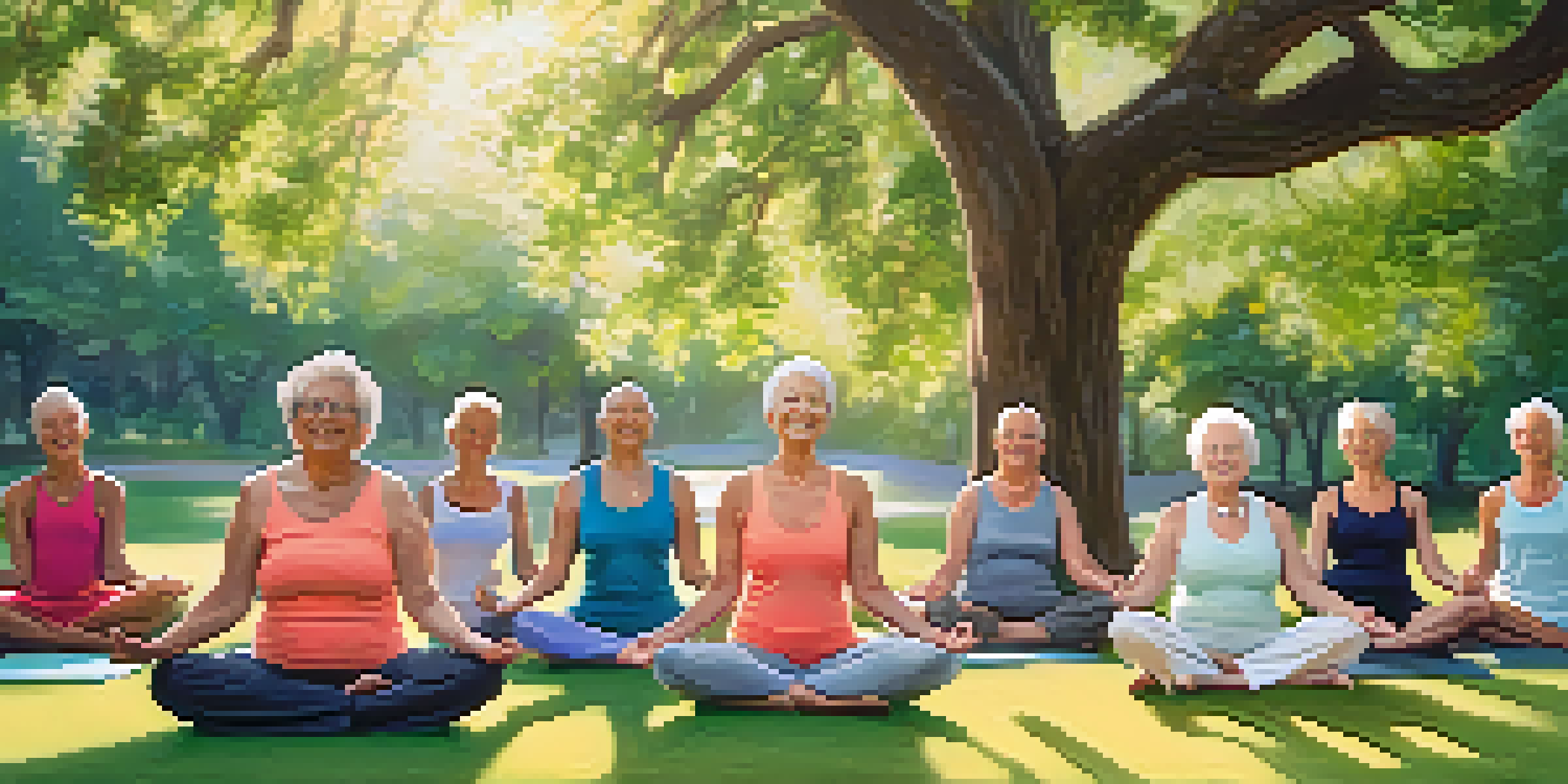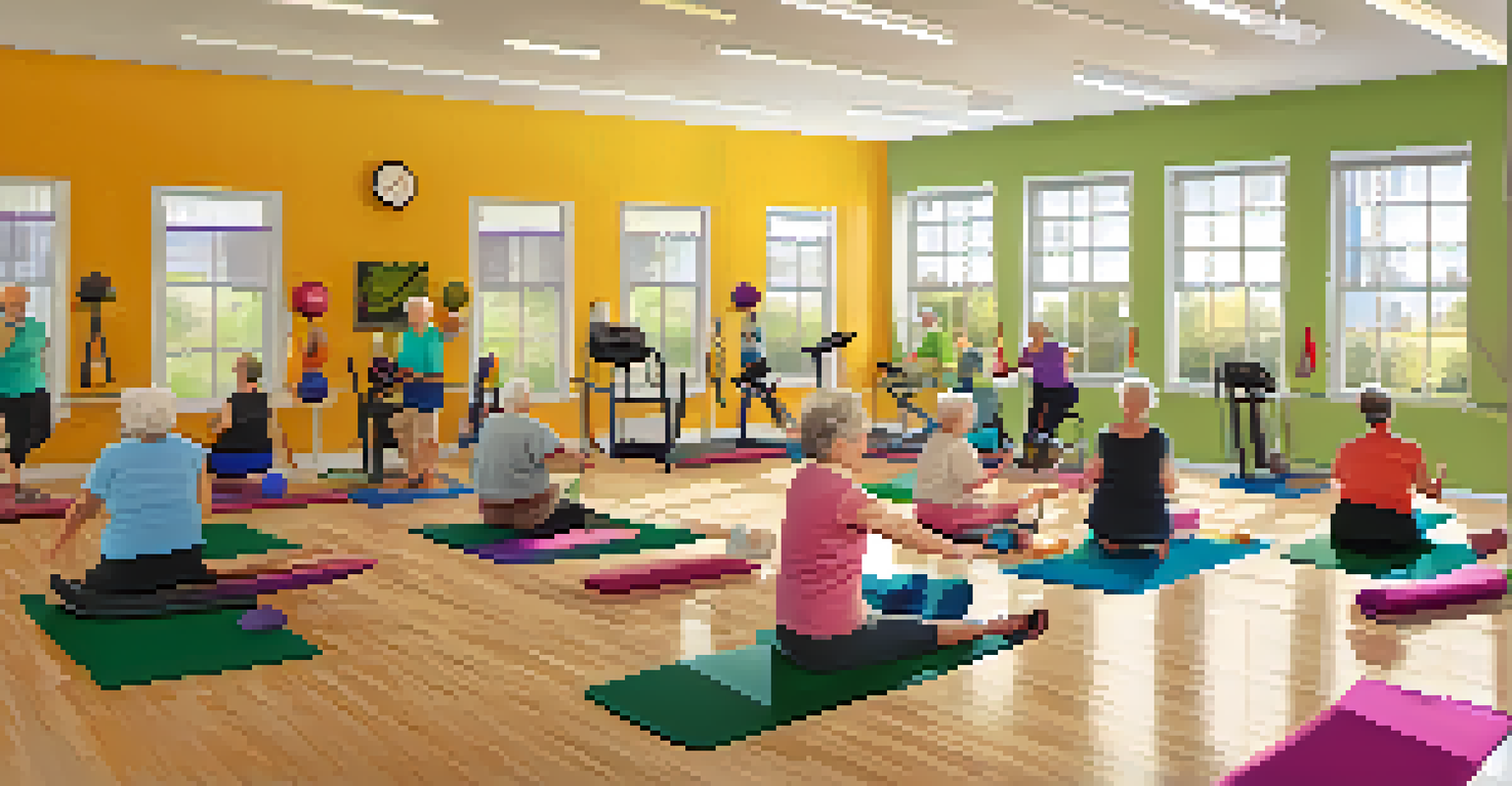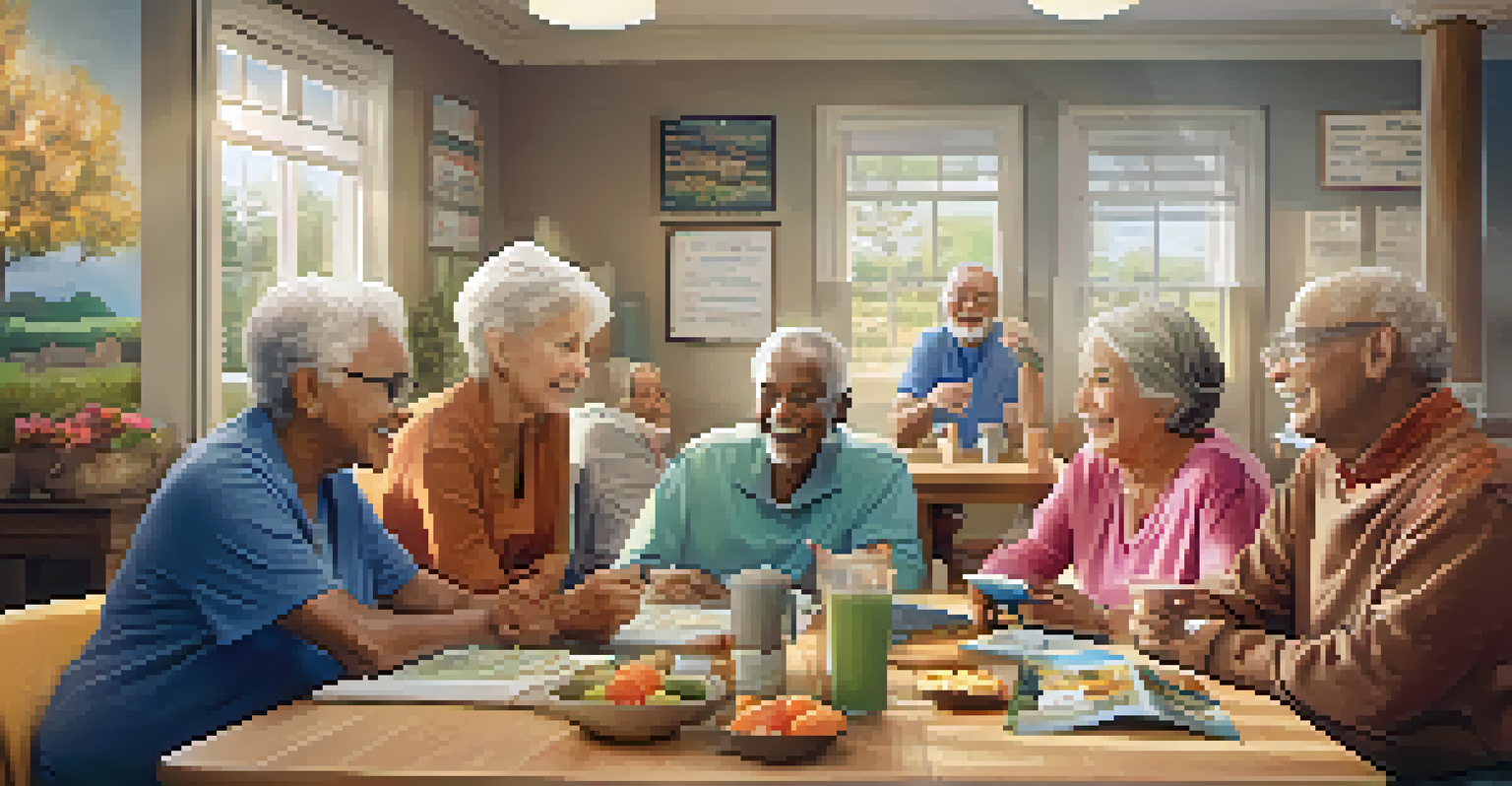Understanding the Unique Needs of Seniors in Fitness Settings

Recognizing the Importance of Senior Fitness
Physical activity is crucial for seniors, as it enhances their overall well-being and maintains independence. Engaging in regular exercise can help manage chronic conditions, improve mobility, and boost mental health. Understanding the significance of fitness for seniors sets the stage for creating programs that truly cater to their needs.
The greatest wealth is health.
Moreover, staying active can lead to increased social interaction, helping combat feelings of loneliness or isolation. This sense of community is vital for their emotional health. By prioritizing fitness, we are not just promoting physical activity; we are also nurturing a vibrant social life.
Ultimately, recognizing the importance of senior fitness is about more than just physical health. It's about fostering a holistic approach that supports both body and mind, ensuring seniors can enjoy a higher quality of life.
Adapting Fitness Programs for Physical Limitations
Seniors often face unique physical challenges, such as arthritis or limited mobility, making it essential to adapt fitness programs accordingly. Tailoring exercises to accommodate these limitations ensures that all seniors can participate safely and effectively. For instance, incorporating chair exercises can provide a safe alternative for those with balance concerns.

It's also important to consider the intensity and duration of workouts. Shorter sessions with adequate rest can be more beneficial than long, strenuous workouts. Gradual progression in difficulty allows seniors to build confidence and strength without overwhelming them.
Emphasizing Senior Fitness Benefits
Regular physical activity enhances seniors' well-being, mobility, and mental health, while also fostering social connections.
By adapting fitness programs for physical limitations, we create an inclusive environment where seniors feel comfortable and motivated to participate. This not only aids their physical health but also promotes a sense of achievement and empowerment.
Incorporating Social Elements into Fitness
Seniors often thrive in social settings, making the incorporation of social elements into fitness programs vital. Group classes, for example, can foster camaraderie and encourage regular attendance. The friendships formed in these environments can serve as a motivating factor, promoting consistency in their fitness journeys.
You don’t stop laughing when you grow old, you grow old when you stop laughing.
Additionally, social interactions during workouts can enhance the overall experience, making exercises more enjoyable. Sharing laughs and stories while exercising can help ease any apprehension about physical activity. This social aspect often leads to a supportive community, where seniors uplift one another.
Incorporating social elements into fitness is not just about exercise; it’s about building connections. This sense of belonging can be a powerful incentive for seniors to prioritize their health and well-being.
Understanding the Emotional Needs of Seniors
Emotional health is as critical as physical health, especially for seniors who may face various life changes. Understanding the emotional needs of seniors can help fitness instructors create a more supportive atmosphere. Many seniors experience feelings of loss, loneliness, or anxiety, and a compassionate approach can make a significant difference.
Creating a welcoming and empathetic environment can encourage seniors to express their feelings and concerns. For instance, checking in with participants before or after sessions can help build trust and rapport. This emotional support can motivate seniors to engage more actively in their fitness journeys.
Adapting Programs for Limitations
Tailoring fitness programs to accommodate physical challenges ensures all seniors can participate safely and effectively.
By recognizing and addressing the emotional needs of seniors, fitness programs can foster a sense of security and comfort. This holistic approach not only enhances their fitness experience but also contributes positively to their mental health.
Encouraging Goal Setting and Progress Tracking
Setting personal fitness goals can be incredibly empowering for seniors. Encouraging them to define their own objectives fosters a sense of ownership over their health journey. Whether it's improving balance, increasing strength, or simply committing to regular exercise, having clear goals can boost motivation.
Tracking progress is equally important, as it provides tangible evidence of their hard work. Simple tools like journals or fitness apps can help seniors visualize their achievements, reinforcing their commitment. Celebrating small victories along the way can also enhance their sense of accomplishment.
By encouraging goal setting and progress tracking, we help seniors stay engaged and motivated in their fitness routines. This approach not only enhances their physical capabilities but also cultivates a positive mindset towards health and fitness.
Utilizing Technology to Enhance Engagement
Technology can play a significant role in enhancing senior fitness experiences. From fitness apps that offer guided workouts to online classes that promote social interaction, there are countless resources available. Familiarizing seniors with these tools can make their fitness journey more engaging and enjoyable.
Additionally, wearables like fitness trackers can provide insights into their physical activity levels, encouraging them to stay active. These devices can help seniors set reminders for workouts or track their progress, making fitness feel more accessible.
Fostering Community Through Fitness
Incorporating social elements in fitness programs helps seniors build connections, promoting consistency and enjoyment in their exercise routines.
By utilizing technology, we open up new avenues for engagement and support. This modern approach can help bridge the gap between fitness and convenience, empowering seniors to take charge of their health.
Creating a Safe and Accessible Environment
Safety and accessibility are paramount in fitness settings for seniors. Ensuring that the environment is free from hazards, such as loose mats or clutter, can help prevent injuries. Additionally, equipment should be easily accessible and user-friendly, allowing seniors to participate without difficulty.
It's also beneficial to have trained staff available to assist seniors who may need help with exercises or equipment. Providing clear instructions and demonstrations can further enhance safety and confidence during workouts. This proactive approach ensures seniors feel secure and supported in their fitness journey.

Creating a safe and accessible environment is about more than just physical space; it’s about fostering a culture of care. When seniors feel safe, they are more likely to engage fully and enjoy their fitness experience.